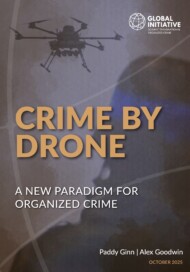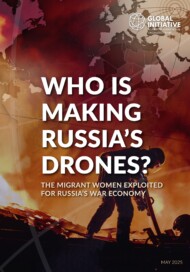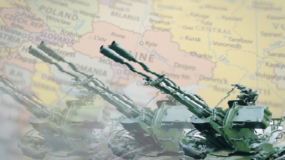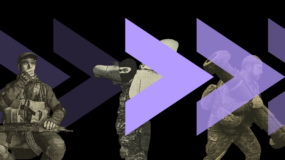Posted on 30 Oct 2025
The Russo-Ukrainian war has profoundly changed how drones are used in conflict. Over the past three years, drones have shifted from being auxiliary tools to becoming decisive elements on the battlefield; used for reconnaissance, resupply and, increasingly, for lethal attacks. By some estimates, drones now account for around 60–80% of front-line strikes.
While drones had already been used by criminal groups before Russia’s full-scale invasion in 2022, the war has dramatically accelerated both their technological sophistication and operational versatility. Mexican cartels, for instance, have long used drones to smuggle drugs, conduct reconnaissance and drop improvised explosives. But the range, complexity and strategic use of drones observed in Ukraine mark a turning point, a transformation that could have significant consequences for organized crime worldwide.
The warning signs are already here. In October 2025, reports emerged of a Mexican cartel member who had been sent to Ukraine to learn how to pilot FPVs as part of the International Legion – skills he planned to transfer to his criminal career afterwards. Fibre-optic drones have also already found their way into Mexican criminal hands.
This report provides a systematic assessment of how drone expertise and technological advances developed during the war could be transferred to organized criminal groups. Drawing on in-depth consultations with Ukrainian drone pilots, the report maps how drones could be adapted for criminal purposes in three key domains: air, land and sea.
In the air, drones offer a natural fit for smuggling low-weight, high-profit commodities such as drugs and tobacco. Land drones provide larger payloads and could also be repurposed as offensive tools if weaponized, as has already been observed in Ukraine. Sea drones, while expensive, can carry heavy payloads over long distances, making them potentially attractive for drug traffickers moving shipments regionally or for arms traffickers transporting bulk consignments discreetly. But drones also come with constraints around cost, range, payload and communications that may shape criminal considerations.
The human factor remains critical: drones must be piloted, assembled, transported and met. Expertise in communications, navigation, covert operations and counter-detection will determine their impact in criminal hands.
To respond to this evolving threat, the report outlines a three-phase strategy:
- Immediate: threat triage, hotspot mapping, low-cost detection and standardization of incident reporting.
- Short term: deployment of layered sensor systems, legal clearance roadmaps and targeted disruption of key enablers such as fabricators and logistics hubs.
- Long term: regional cooperation, joint investigative teams, regulation of critical components, and investment in scalable counter-drone technologies.
The report calls for coordinated national, regional and international responses to address this emerging challenge before it becomes entrenched.




